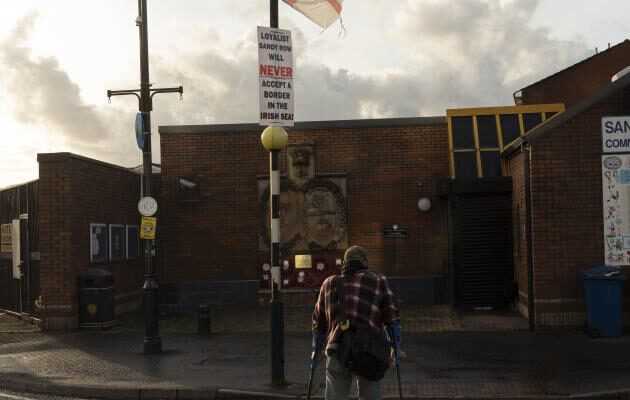InvestigationA century ago, the armed struggle for independence led to the partition of the island between Republicans, in the south, and supporters of maintenance in the United Kingdom, in the north. After more than twenty years of peace in Northern Ireland, even if all the wounds have not been closed, Brexit is now giving new vigor to the idea of reunification.
Michael Higgins is a voice that matters in Ireland. At 80, the Irish president has done a lot for peace and reconciliation. However, he created controversy in mid-September by refusing to honor an invitation sent by the Catholic and Protestant churches of the island to attend, on October 21, an ecumenical mass celebrated on the North Irish side, in Armagh, for to mark the centenary of the partition of Ireland. Ceremony in which Queen Elizabeth II is expected to participate. His presence would not be “Appropriate”, justified Mr. Higgings, without convincing in Northern Ireland, where many deplored this refusal, especially on the side of the Unionist and loyalist communities, attached to the province’s membership in the United Kingdom.
Ireland’s history remains so painful and controversial that it is still difficult to face, even for the wisest minds. 2021 nevertheless marks an important anniversary, the hundred years of a series of events which led to the successive creations of Northern Ireland (semi-autonomous province of the United Kingdom), of the “Free State” of Ireland, south (which would later become the Republic of Ireland) and a winding border of about 300 miles (480 kilometers) separating the two entities, from the rugged coast of Donegal in the north-west to the Carlingford Bay, to the southeast. A partition always denounced as an aberration by the nationalists, for the most part Catholics, in favor of the unity of the island. A border considered on the contrary as a saving cordon by the Unionists, for the most part Protestants, which allowed them to escape the “law of Rome” (Catholicism).
A trivialized theme
This centenary is all the more sensitive as it coincides with the first year of Brexit, against which the majority of Northern Irish people voted, in 2016, and which had a major destabilizing effect on the province by exacerbating the delicate question. and unresolved boundaries and identities. To prevent the reappearance of the land border (rendered almost virtual by the peace treaty of the Good Friday Agreement, the Good Friday Agreement, which, in 1998, put an end to thirty years of bloody “Troubles”), London and Brussels have decided a maritime customs border, between Great Britain and Northern Ireland. But loyalists reject it and some do not hesitate to predict the return of violence if they are not heard.
The delicate question of reunification has in fact become central again. Brexit leads to a reorientation of trade flows, which could accelerate the economic unification of the island (trade with Europe or Great Britain has decreased in the North Irish ports in favor of those of the Republic of Ireland ). For the first time in the history of the province, Sinn Fein, ex-political arm of the Irish Republican Army (IRA, an Irish paramilitary group opposed to the British presence in the island), could come out first from the polls, when next election, in May 2022. It also recorded a historic victory in the South in the 2019 general election, winning the same number of seats as centrist Fianna Fail in Dail (Dublin’s Chamber of Deputies).
You have 84.94% of this article left to read. The rest is for subscribers only.
